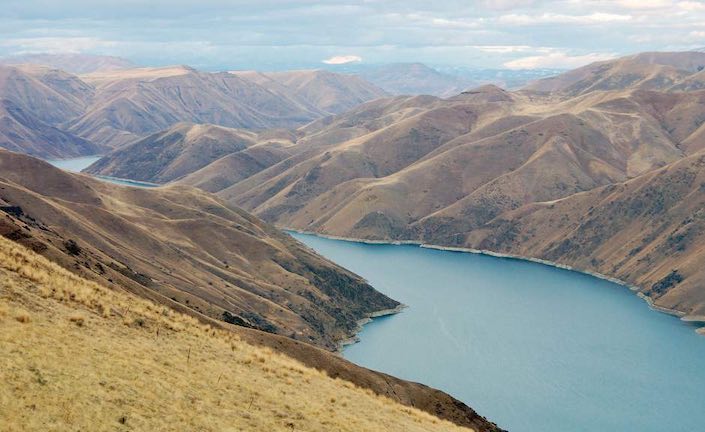forum
library
tutorial
contact

Damming the Salmon
by Mary Caperton MortonEarth Magazine, September 3, 2015
|
the film forum library tutorial contact |

|
Damming the Salmonby Mary Caperton MortonEarth Magazine, September 3, 2015 |
 In the 1940s, the state of Idaho decided that the Salmon River would be left to flow freely while the Snake would be developed for hydroelectric power to become Idaho's workhorse river. To date, a total of 15 dams have been built along the Snake for a variety of purposes, from irrigation to flood control to hydroelectricity. Hells Canyon is home to three hydroelectric impoundments: the Brownlee, Oxbow and Hells Canyon dams, built in 1959, 1961 and 1967, respectively. Together they have a maximum capacity of 391 megawatts of power production.
In the 1940s, the state of Idaho decided that the Salmon River would be left to flow freely while the Snake would be developed for hydroelectric power to become Idaho's workhorse river. To date, a total of 15 dams have been built along the Snake for a variety of purposes, from irrigation to flood control to hydroelectricity. Hells Canyon is home to three hydroelectric impoundments: the Brownlee, Oxbow and Hells Canyon dams, built in 1959, 1961 and 1967, respectively. Together they have a maximum capacity of 391 megawatts of power production.
In the early 1900s, the Snake River was home to a prodigious population of salmon, annually producing more than 1.4 million Chinook, 340,000 steelhead, 200,000 Coho and 150,000 sockeye salmon, and once accounting for about 40 percent of the salmon population of the Pacific Northwest. Salmon are anadromous: They are born in freshwater, migrate to the ocean, then return to the stream in which they were born to reproduce. None of the three dams in Hells Canyon were built with salmon ladders or passages to allow the upstream migration of adult fish, effectively ending salmon migration in the upper Snake River. Today, wild salmon populations along the Snake have plunged to less than 10 percent of their pre-European settlement numbers, with all four Snake River species now classified as threatened or endangered.
Several advocacy groups have called for the destruction of the lower four dams (the Ice Harbor, Lower Monumental, Little Goose, Lower Granite dams) on the Snake River, which were built downriver from Hells Canyon, toward the Columbia River. Removal of these dams would ideally help adult salmon make their way upstream to spawn, as well as aid the dispersal of young fish downriver toward the ocean.
However, the three dams in Hells Canyon -- which generate a third of Idaho Power's total hydroelectric supply -- are likely there to stay. The dams are too high for fish ladders that would allow the safe passage of adult fish, and attempts to collect and transport fish up- and downriver have so far proved unsuccessful.
Related Pages:
Idaho Power (2001) - Ranking Dams by Reed Burkholder, 12/5/01
learn more on topics covered in the film
see the video
read the script
learn the songs
discussion forum
